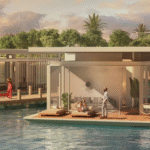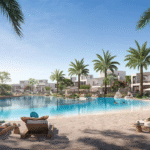Now Reading: Impact of Infrastructure Projects on Sharjah’s Property Values in 2025
-
01
Impact of Infrastructure Projects on Sharjah’s Property Values in 2025
Impact of Infrastructure Projects on Sharjah’s Property Values in 2025
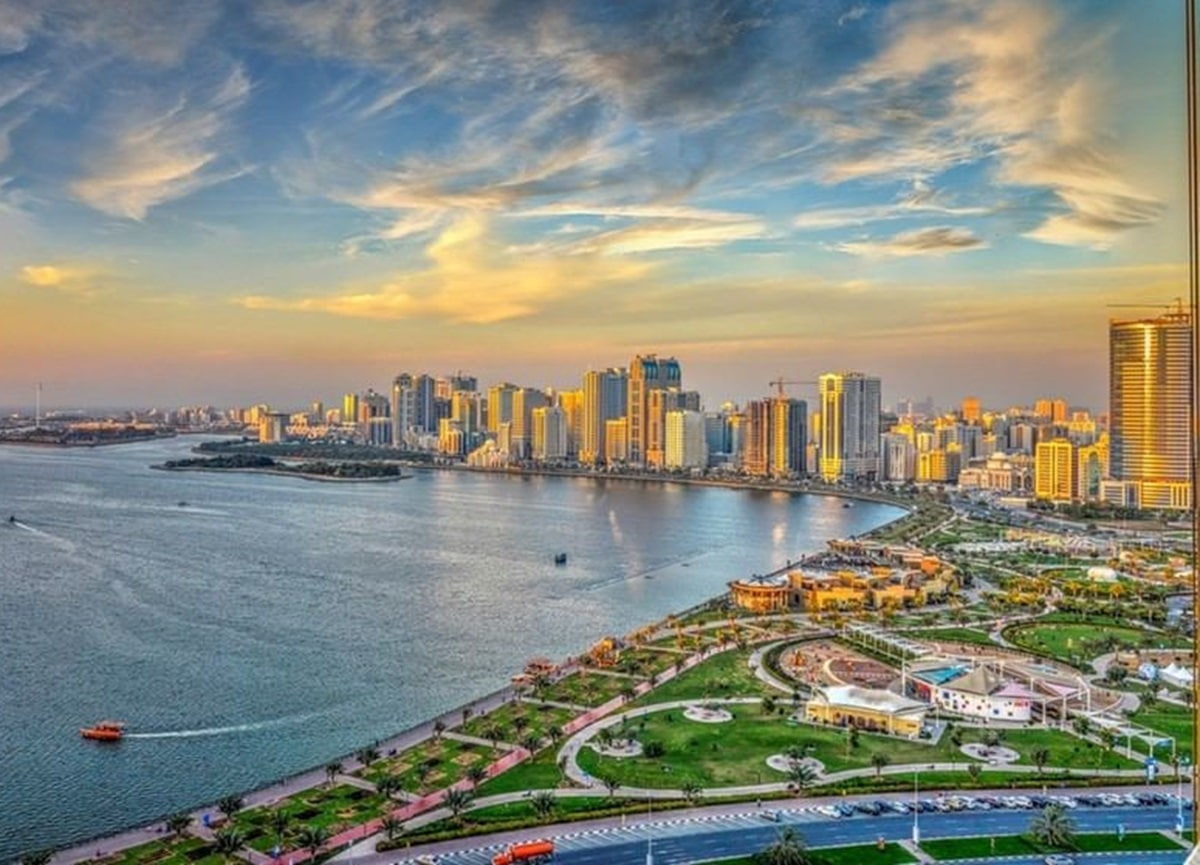
Table of Contents
Sharjah’s real estate market in 2025 is experiencing significant growth, fueled by infrastructure projects that enhance connectivity, livability, and investment appeal. With AED 10.5 billion in transactions in Q1 2025 (up 159.2% year-over-year) and a projected 3.5–5% residential price increase by 2026, these developments are reshaping property values across residential, commercial, and industrial sectors. Building on prior analyses of smart city initiatives, sustainable living, and foreign investment in the UAE, this response examines how infrastructure projects are driving property value appreciation in Sharjah, focusing on key areas, specific projects, and their economic impacts, while drawing comparisons to trends in Abu Dhabi and Ajman.
Key Infrastructure Projects Impacting Sharjah’s Property Values in 2025
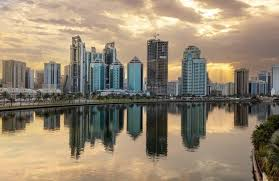
- Al Mamzar Beach Development (AED 400 million, completion late 2025):
- Details: This project transforms Al Mamzar into a premier tourism destination with sustainable facilities, sports amenities, retail outlets, a pedestrian pontoon bridge, and a night-swimming beach.
- Impact on Property Values: Enhances appeal in Al Mamzar, driving 5–7% price growth for high-end residences like Faradis Tower (apartments, AED 800,000–1.2 million, 7–8% ROI). Tourism-driven demand boosts short-term rental yields (8–10%), similar to Ajman’s Al Zorah tourism rentals.
- Comparison: Mirrors Abu Dhabi’s Yas Island tourism projects, but Al Mamzar’s affordability attracts a broader investor base.
- Public Transport Expansion (Dubai Metro Blue Line and Sharjah Road Networks):
- Details: The Dubai Metro Blue Line extension and Sharjah’s road upgrades (e.g., Al Wahda Road, Kalba Road) improve connectivity to Dubai and Sharjah International Airport. New public transport links in Al Qasimia and Tilal City enhance accessibility.
- Impact on Property Values: Properties near metro-adjacent areas see 10–15% price appreciation, akin to Dubai’s 26% premium for metro proximity. Al Qasimia apartments (AED 600,000–900,000, 7–9% ROI) and Tilal City villas (AED 1.5–2 million, 6–8% ROI) benefit from commuter demand, with rental yields at 4.26% (highest regionally).
- Comparison: Similar to Abu Dhabi’s Etihad Rail boosting Khalifa City, but Sharjah’s lower entry points (30–40% below Dubai) attract middle-income buyers.
- Aljada Master-Planned Community (AED 24 billion):
- Details: Developed by ARADA, Aljada spans 2.2 square kilometers near Sharjah University City, offering 70,000 residents smart infrastructure, 5G, retail, and entertainment.
- Impact on Property Values: Drives 7–10% price growth in Aljada (apartments, AED 700,000, 7–8% ROI), with off-plan sales surging (36% of properties sell above asking price). High rental demand from students and professionals, akin to Abu Dhabi’s Saadiyat Island cultural hub, supports 6–9% yields.
- Comparison: Aljada’s smart city features align with Abu Dhabi’s Masdar City, but its mixed-use focus caters to a wider demographic.
- Sharjah Sustainable City (LEED Gold):
- Details: A Shurooq and Diamond Developers project, it features solar-powered homes, water recycling, and car-free zones, targeting eco-conscious residents.
- Impact on Property Values: Apartments (AED 600,000–800,000, 8–9% ROI) and villas (AED 1.5–2 million, 7–8% ROI) see 5–7% price growth due to 20–25% utility cost savings and zero service charges. Expatriate demand mirrors Ajman’s Al Ameera Village.
- Comparison: Comparable to Abu Dhabi’s The Sustainable City on Yas Island, but Sharjah’s affordability enhances investor appeal.
- Tilal City Infrastructure Upgrades:
- Details: New road networks, healthcare facilities, parks, and schools near Sharjah International Airport and Dubai’s border improve connectivity and livability.
- Impact on Property Values: Tilal City sees 5–7% price growth for villas (AED 1.5–2 million, 6–8% ROI) and apartments (AED 500,000–700,000, 7–9% ROI). Family-driven demand, similar to Abu Dhabi’s Al Ghadeer, boosts occupancy rates.
- Comparison: Tilal City’s strategic location parallels Ajman’s Hay Al Helio 2, but Sharjah’s infrastructure scale drives higher appreciation.
- Muwaileh School-Driven Developments:
- Details: Proximity to schools like Indian School Sharjah and Providence British Private School, coupled with new residential projects, enhances Muwaileh’s family appeal.
- Impact on Property Values: Apartments (AED 500,000–800,000, 8–9% ROI) and villas (AED 1.2–1.8 million, 6–8% ROI) experience 5–7% price growth and high rental demand (4.26% yields), driven by expats and students, akin to Abu Dhabi’s Khalifa City.
- Comparison: Muwaileh’s school proximity mirrors Ajman’s Al Yasmeen, but Sharjah’s broader infrastructure supports stronger returns.
- Sewerage and Road Networks (Sharjah Municipality):
- Details: AED 45 million road paving in industrial areas and sewerage networks (85% complete in Al Jazat, 60% in Al Ramla) improve logistics and urban functionality. Small-scale waste treatment stations in University City and eastern areas enhance sustainability.
- Impact on Property Values: Industrial properties in Sajja and Al Saja’a see 5–7% price growth (commercial spaces, AED 1–2 million, 5–7% ROI), driven by 38.6% cargo volume growth (2024). Residential areas like Al Ramla (apartments, AED 400,000–600,000, 7–9% ROI) benefit from improved livability.
- Comparison: Similar to Abu Dhabi’s Al Reem Island infrastructure upgrades, but Sharjah’s industrial focus attracts SMEs.
Economic and Market Impacts
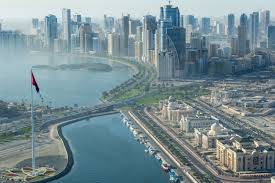
- Price Appreciation: Residential prices (median AED 895,000) are projected to reach AED 925,000–940,000 by 2026, with Aljada and Muwaileh leading (7–10% growth). Metro-adjacent areas may see 10–15% increases, aligning with global trends where transit boosts values by 15–30%.
- Rental Yields: Sharjah’s 4.26% average yield (highest in the UAE) is driven by expatriate demand from Dubai, with outer districts like Tilal City and Muwaileh offering 6–9%. Short-term rentals in Al Mamzar yield 8–10%.
- FDI Surge: Foreign transactions rose 84.6% in H1 2024, with 5,914 properties traded. FDI (140% growth, targeting USD 10 billion in five years) fuels off-plan sales in Aljada and Sharjah Sustainable City, similar to Abu Dhabi’s AED 7.86 billion FDI (2024).
- Inventory Dynamics: Tight supply (39 days on market, down from 47 in 2024) and 36% of properties selling above asking price indicate strong demand, particularly in master-planned communities.
- Government Support: AED 13.5 billion for affordable housing and rebates on construction costs attract developers, boosting projects like Nasma Residences and Al Mamsha, akin to Ajman’s subsidies.
Opportunities for Investors

- Residential Investments:
- Short-Term Rentals:
- Industrial and Commercial:
Challenges and Considerations
- Project Delays: Land acquisition or funding issues could delay projects like Al Mamzar Beach, impacting short-term appreciation, as seen in India’s metro projects.
- Tax Compliance: 9% corporate tax (>AED 375,000 income) and eInvoicing require registration by March 31, 2025 (AED 10,000 penalty), similar to Abu Dhabi and Ajman.
- Supply Constraints: Limited affordable ready units in Muwaileh and Tilal City may inflate prices, mirroring Ajman’s Hay Al Helio 2.
- Speculative Risks: Over-investment in off-plan projects could lead to unsustainable price hikes, requiring careful due diligence, as noted in global infrastructure trends.
Recommendations
- Investment Focus: Target off-plan residential in Aljada or Tilal City for 6–9% yields and 5–10% growth. Consider short-term rentals in Al Mamzar for 8–10% ROI.
- Due Diligence: Verify project timelines with Sharjah Urban Planning Council and ownership laws via Sharjah Real Estate Registration Department .
- Tax Planning: Register for taxes via EmaraTax ; claim R&D credits for sustainable projects, consulting PwC Middle East.
- PropTech: Use Bayut, dubizzle, and Quanta for market insights, as in Smart City Initiatives.
- Monitor Progress: Track infrastructure updates via Shurooq and Khaleej Times.
Conclusion
Infrastructure projects in Sharjah, including Al Mamzar Beach, Aljada, and public transport expansions, are driving 3.5–15% property price growth and 4.26–10% rental yields in 2025. Areas like Muwaileh, Tilal City, and Sharjah Sustainable City offer high ROI (6–9%), fueled by FDI (140% growth) and government support (AED 13.5 billion). While challenges like project delays and tax compliance persist, investors can capitalize on Sharjah’s affordability and connectivity by targeting off-plan and sustainable properties, leveraging Shurooq, Bayut, and ARADA, and ensuring compliance by March 31, 2025.
WATCH MORE: https://www.youtube.com/watch?v=AANERqghTnE
READ MORE: Comparative Analysis: Real Estate Investment in Abu Dhabi, Ajman, and Sharjah in 2025












